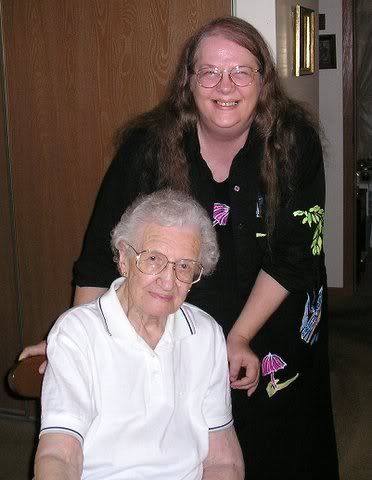Woo Hooo One Down One More To Go Tonight!

Ok, ok … we made a baby post to get that part of our morning out of our head. I think it might have something to do with a medicine change where were taking one med in the morning and then the same twice during the evening … it’s the only thing I can figure as to being so sleepy … unless it’s more a problem of the sleep apnea. I know falling asleep in a repetitive instance is like a warning sign.
Hmm, cleared a few cobwebs. We took the medicine about 45 minutes ago and have been in IM with our friend for the last 30 minutes. That seemed to help. We did some talking over of several things, but pretty much centered again on the wagon and money …
Trying to work through things. He said we’ll play it by ear as to what we owe him and should be able to pay by late April. That’s if all the cards fall in the right basket. It is a big concern to us. We don’t want to have him in this type of relationship to us that he’s paying our way. We’ve always been independent as to the money. I like that I don’t cost him any more than a periodic dinner out … and at that, we’ve been doing most the meals this last year with sandwiches. Not so much eating out anymore. We don’t go out and do other things that might cost money like the theatre or movies, or other forms of entertainment. Mostly it is a cuddly womb experience … our entertainment … in that there’s a lot of smooching up together. That’s fine by me
Ok, by now it is about 9:15 am. We are getting more worried as we go because we are so out of touch with school. I think we have a deadline today that is going to mean that I have to write two papers and leave at least 4 comments. And, if that gets done, I’ll still be a week behind. The good part is that I’ve done the text and reader reading for the papers … just have to get something from the library to fill her in. I need to make this transition and I’m feeling a little leary of it because its going to demand that I can think succinctly. I might have to do something toward that now. Maybe I should start with going to the classroom to see if there are any fires to put out. Hold on … we gotta do this … SWEETIE SAYS!!!
Ok, we’re back and taking a semi-break … we’re just going to jot down a few thoughts because we are waiting on a late lunch. I did the comments for the last two sessions. The absolute fact though is that if I’m going to keep a 100% score, I am going to need doing two papers tonight. I’ve just started scratching out the outline for the first paper, which is on aggressive and violent behavior, the next one is about the same, but as it reflects on gender. I think I’m going to slip back into something comfortable. I had dressed to move the car so that he could snow plow – our maintenance guy. That was a good thing. I like it when the lot is free of most snow and ice. In the meantime … I went as far as to make an extra pot of coffee. I don’t usually do this, but I might need to work up until the midnight hour and I think its going to be necessary messing with my senses.
Ok, I think we lost too much time on that one … we are going to save the rest of the reading for later. We’ve got about 50-60 more posts to go through. I know I should just skip them, but then I lose out so much on what’s going on. I’ve already lost out in timely response to most, I’m sure many have assignments in and are working on the next or their final paper. I’m always in arrear. No time though like the present … just gotta remember I can do it. Ok, will be over here

Start Paper HERE …
Topic: u06d1 Violence and Aggressive Behavior Date: February 25, 2007 6:08 PM
Subject: In response to the assignment from Ann
Author: Garvey, Ann
Last edited on: February 25, 2007 6:30 PM
The question is “does viewing violent behavior increase the likelihood of aggressive behavior?” Looking immediately to our text, we find there is an overwhelming “causal connection between media violence and aggressive behavior in some children” (Andersen & Bushman, 2002a, p. 2377 as cited in Brehm, Kassin, & Fein, 2005, p. 426). Our text authors also state that there is “No evidence that viewing media violence causes real-world aggression” because “no one can prove that a specific fictional depiction was the primary cause of a specific act of violence. There are always other possibilities” (p. 424). This point on "proof" whereby tests may be insufficient, will be addressed briefly in a moment by discussion of Fiedler & Freytag.
Specifically, Brehm, Kassin, & Feing (2005, p. 425) state research supports “media violence contributed to real aggression and violence.” The exclusiveness of “cause” causes a stumbling block as to implanting true change in the field. There seems to be needs for media violence in that people are conditioned to fight or flight, which brings up again the question of catharsis. The text authors add “our values and attitudes toward aggression [make] it seem more legitimate and even necessary for social interaction and resolution of social conflicts” (p. 428), but the media forms are socially interactive and the violent games, media and TV are a means of dealing with social conflict. This perspective has been well established by producers of media violence who have perhaps overwritten their cue and avoid detrimental reigning-in especially due to testing inadequacies.
Fiedler & Freytag (2004, p. 453) argue that “There is no logical basis for inferring a contingency of TV habits and aggression. The existence of both absolute trends in the entire class does not imply that the relative aggression rate is higher in those students who watch TV a lot.” Fiedler and Freytag argue their point because the event of TV habits and aggressive behavior need to be tested at the same time at different categorical levels for example in a school classroom opposed to verbal self-disclosures of home usage (p. 454). The value of their argument is to challenge the testing resources that are available, though at the end of their study they conclude weakly that because testing comes closest to approximating contingencies of physical and social worlds that although “common” they do represent our best chance of making sense of our environment (p. 467).
Andersen & Dill (2000, p. 772) show the result that “real-life violent video game play was positively related to aggressive behavior and delinquency,” Although they state that this is more common for individuals who are either men or are characteristically aggressive. And, Huesmann, Moise-Titus, Podolski, & Eron (2003, p. 201) state that “media violence predicts young adult aggressive behavior for both males and females” and “identification with aggressive TV characters and perceived realism of TV violence also predict[s] later aggression” “Media violence was said to be in affect regardless of socioeconomic status, intellectual ability, and a variety of parenting factors” (p. 201). In the follow-up work for the next lesson, we will look more at specific male qualities that affect aggression, such as testosterone. But, identity formation is a major purpose factor for all young adults. Game systems even the field and are seen as a means of competing in a global arena without direct violence.
The debilitating factors of violent media exposure might include rehearsal of “aggressive scripts that teach and reinforce vigilance for enemies (i.e., hostile perception bias), aggressive action against others, expectations that others will behave aggressively, positive attitudes toward use of violence, and beliefs that violent solutions are effective and appropriate” (Andersen & Dill, 2000, p. 774). This level of thinking takes into accordance the affects of long-term usage on the players and the mediating factors of the violent messages as being over-learned and reinforced, though they state to take affect the intake must be coupled with some kind of provocation (p. 774). Huesmann, et. Al (2003, p. 201) suggest
[Indent here] most researchers of aggression agree that severe aggressive and violent behavior seldom occurs unless there is a convergence of multiple predisposing and precipitating factors such as neurophysiologic abnormalities, poor child rearing, socioeconomic deprivation, poor peer relations, attitudes and beliefs supporting aggression, drug and alcohol abuse, frustration and provocation, and other factors [End indentation].
If one were laden down with one or more factors that leant themselves to violence, they may find themselves relating more often to people and social environments that were also violent because of less violent people do not tolerate aggression and show this by interacting less with those who hold violent “outlooks, perceptual biases, attitudes, beliefs, and behavior” (Andersen & Dill, p. 774). The violence is dangerous to health and well-being. Brehm, Kassin, & Fein (2005, p. 426) include characteristic traits of aggression as being irritability, hostility, and a lack of empathy. And, Huesmann et al (2003, p. 202) note that being situated with more violence, the individual will habituate, so he is desensitized toward violence and will offer a flat response when given opportunity toward it because it fits with a scripts and schemas that have been prepared or primed toward aggression.
Lastly, the contribution of Bandera’s Social Learning Theory on Aggression states that we “learn from the example of others as well as from direct experience with rewards and punishments” and this applies to both prosocial and antisocial behavior (Brehm, Kassin, & Fein, 2005, p. 410). If the behavior goes unchecked; without punishment the aggressive behavior will increase though if the individual is given the opportunity to model pro-social behavior, he can adjust positively. It would seem then that for individuals who interact frequently with violent media through television, video games or music, they would need to take healthy breaks from it to re-orientate. As with most things in life, balance is the ideal. Yoga with a yoga master would be nice.
References
Andersen, C. A. & Dill, K. E. (2000, Apr). Video games and aggressive thoughts, feelings, and behavior in the laboratory and in life. Journal of Peronality and Social Psycholgoy, 78(4), 772-790. Retrieved February 25, 2007, from PsycARTICLES data base.
Brehm, S. S., Kassin, S., & Fein, S. (2005). Social Psychology [6th ed]. Boston: Houghton Mifflin Company.
Fiedler, K. & Freytag, P. (2004). Psudocontingencies. Journal of Personality and Social Psychology, 87(4), 453-467. Retrieved February 25, 2007, from PschARTICLES data base.
Huesmann, L. R. Moise-Titus, J., Podolski, C, & Eron, L. D. (2003, Mar), Longitudinal relations between children’s exposure to TV violence and their aggressive and violent behavior in young adulthood: 1977-1992. Developmental Psychology, 39(2), 201-221. Retrieved February 25, 2007, from PsycARTICLES data base.
End Paper HERE …
















